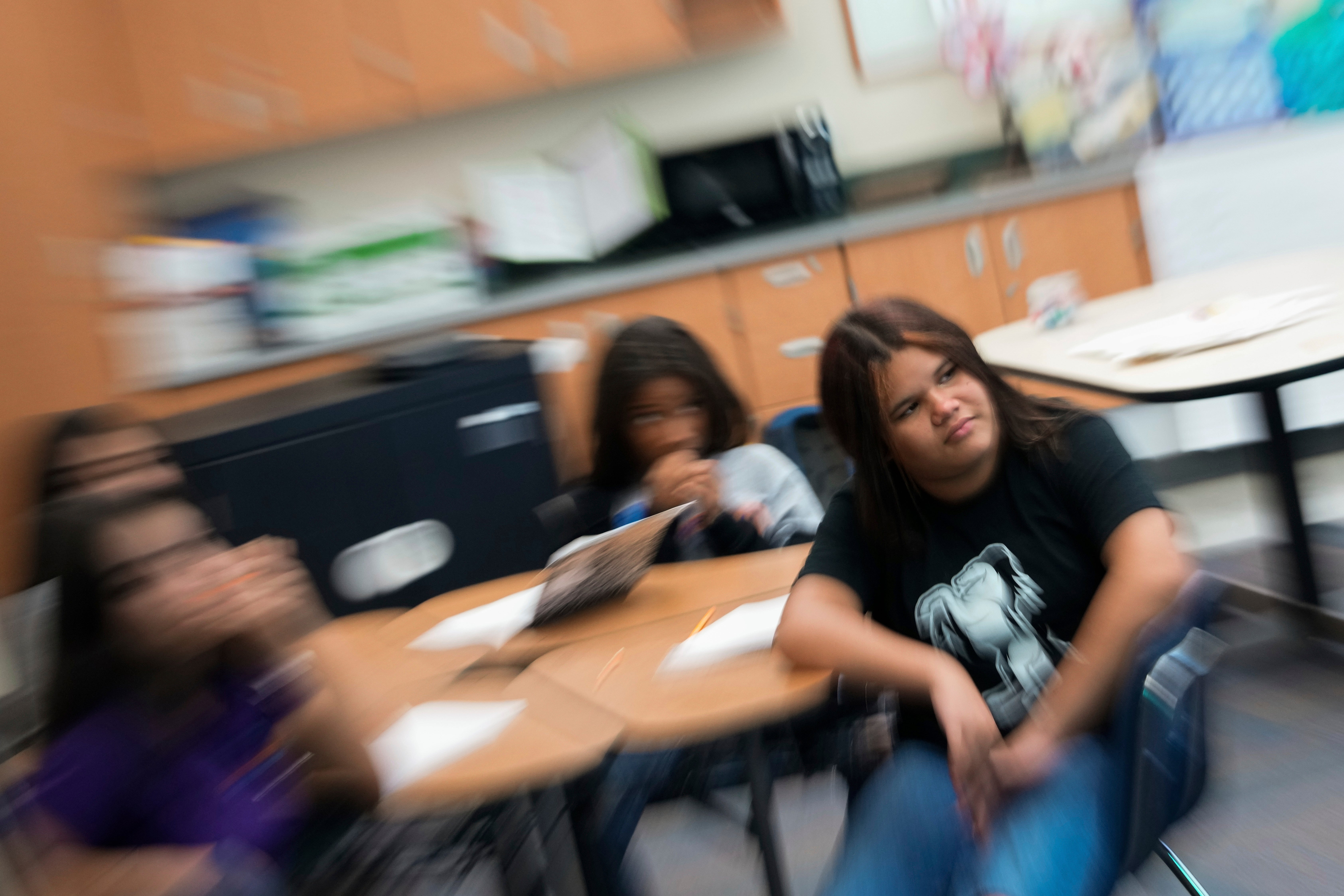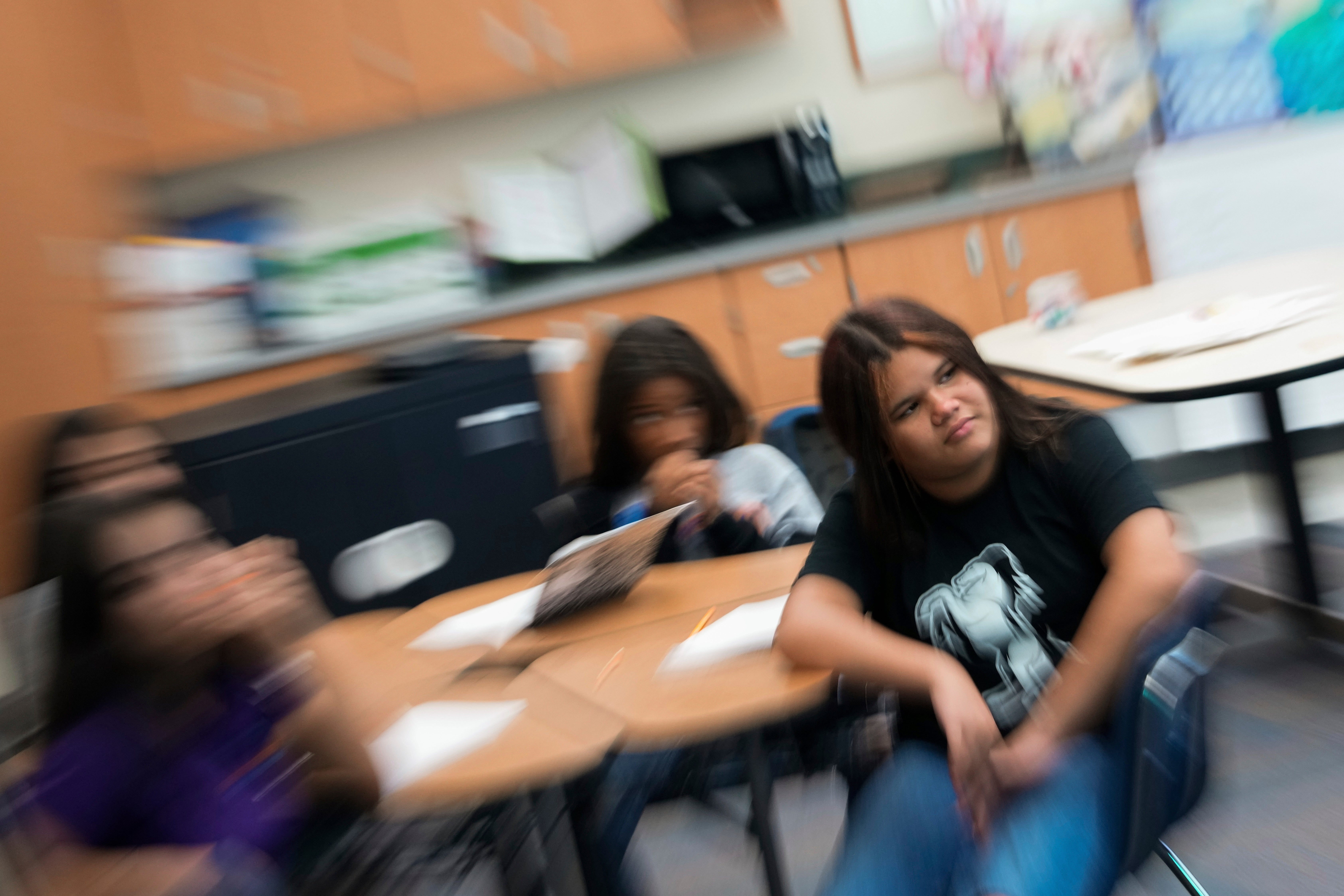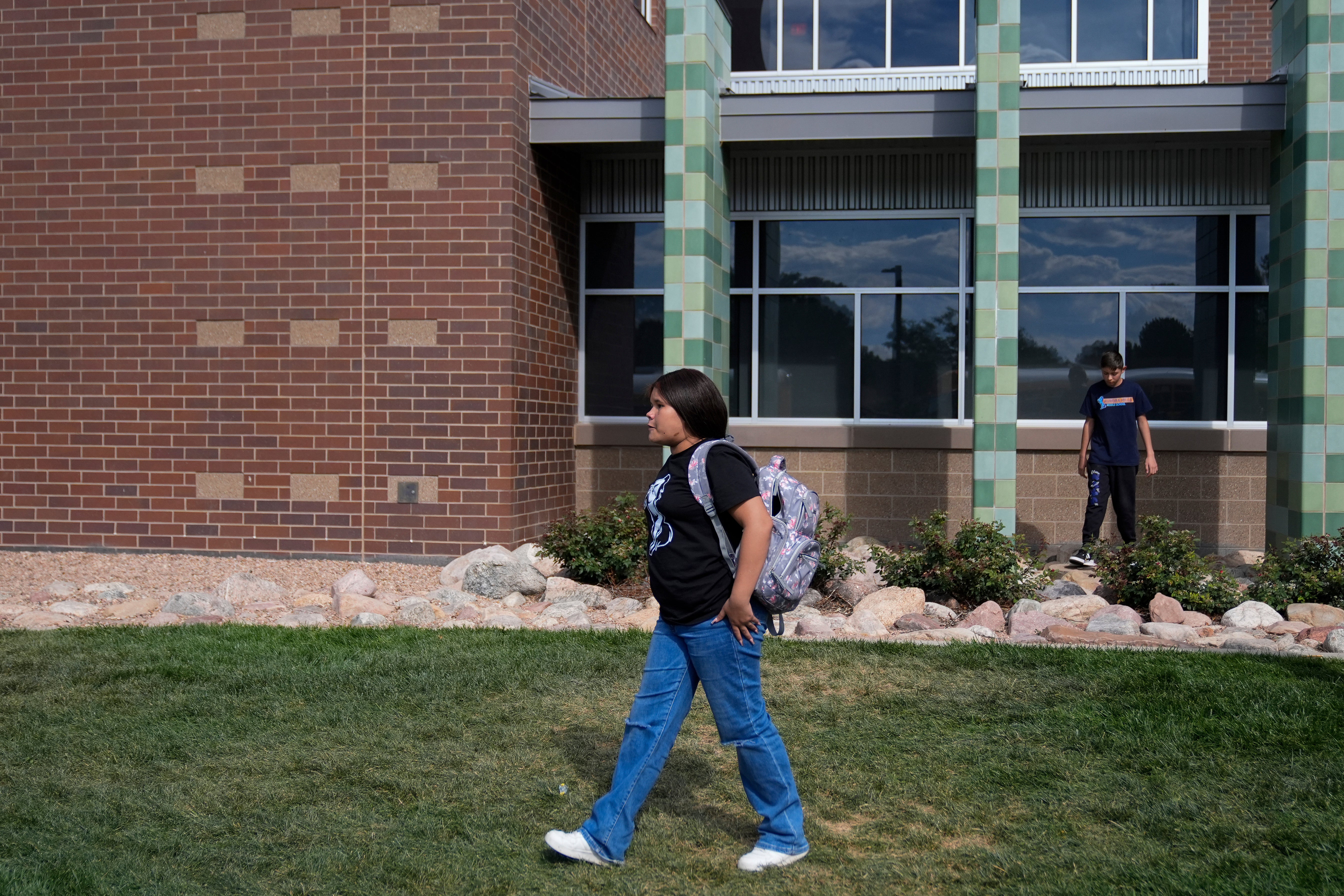Venezuelans in Aurora face challenges in school and dealing with Trump-led conspiracies
The school system in Aurora, Colorado, is striving to accommodate more than 3,000 new students mostly from Venezuela and Colombia

Your support helps us to tell the story
From reproductive rights to climate change to Big Tech, The Independent is on the ground when the story is developing. Whether it's investigating the financials of Elon Musk's pro-Trump PAC or producing our latest documentary, 'The A Word', which shines a light on the American women fighting for reproductive rights, we know how important it is to parse out the facts from the messaging.
At such a critical moment in US history, we need reporters on the ground. Your donation allows us to keep sending journalists to speak to both sides of the story.
The Independent is trusted by Americans across the entire political spectrum. And unlike many other quality news outlets, we choose not to lock Americans out of our reporting and analysis with paywalls. We believe quality journalism should be available to everyone, paid for by those who can afford it.
Your support makes all the difference.Starting seventh grade at her first American school, facing classes taught entirely in English, Alisson Ramirez steeled herself for rejection and months of feeling lost.
“I was nervous that people would ask me things and I wouldn’t know how to answer,” the Venezuelan teen says. “And I would be ashamed to answer in Spanish.”
But it wasn’t quite what she expected. On her first day in Aurora Public Schools in Colorado this past August, many of her teachers translated their classes’ relevant vocabulary into Spanish and handed out written instructions in Spanish. One promised to study more Spanish to better support Alisson.
“That made me feel better,” says Alisson, 13.
Outside the classrooms, it’s a different story. While that school system is striving to accommodate more than 3,000 new students mostly from Venezuela and Colombia, the city government has taken the opposite approach. City Council has tried to dissuade Venezuelan immigrants from moving to Aurora by vowing not to spend any money helping newcomers. Officials plan to investigate the nonprofits who helped migrants settle in the Denver suburb.

When Aurora’s mayor spread unfounded claims of Venezuelan gangs taking over an apartment complex there, former president and current GOP candidate Donald Trump magnified the claims at his campaign rallies, calling Aurora a “war zone.” Immigrants are “poisoning” schools in Aurora and elsewhere with disease, he has said.
Trump has promised that Aurora, population 400,000, will be one of the first places he launches his program to deport migrants if he’s elected.
This is life as a newcomer to the United States in 2024, home of the “American dream” and conflicting ideas about who can achieve it. Migrants arriving in this polarized country find themselves bewildered by its divisions.
One thing has seemed obvious to Alisson’s mother, Maria Angel Torres, 43, as she moves around Aurora and nearby Denver looking for work or running errands: While some organizations and churches are eager to help, some people are deeply afraid of her and her family,
The fear first became apparent on a routine trip to the grocery store. Torres was standing in line when she moved a little too close to the young woman in front of her. The woman — a teen who spoke Spanish with an American accent — told Torres to keep her distance.
“It was humiliating,” says Torres.
And when Aurora Mayor Mike Coffman — and then Trump — started talking about Venezuelan gangs taking over Aurora, Torres didn’t believe it. But keeping out dangerous people is important to her. The whole reason her family left Venezuela was to escape lawlessness and violence. They didn’t want it to follow them here.
In addition to Alisson, Torres has an older daughter — Gabriela Ramirez, 27 — whose partner owned a food truck in Venezuela. Government workers there extorted a bribe from him. He paid them the equivalent of $500, about half a week’s earnings, to continue operating.
When Ramirez's partner later refused to pay, the government workers stabbed him in the bicep, and threatened to kill Ramirez and her young son. He sold the business, and the family all fled to Colombia.
A little over two years later, they headed north on foot through the Darién Gap. In Mexico, they crossed the border in Juarez and turned themselves in to U.S. Border Patrol. They all have deportation hearings in 2025, where they will have the opportunity to plead their case for asylum.
Torres and her daughter tried to get their kids into school soon after they arrived in Aurora in February, but they were confused by vaccine requirements. Alisson and Dylan stayed home for months. Dylan played math or first-person shooter games. Alisson watched crafting videos on TikTok.
Aurora is accustomed to educating immigrants’ children. More than a third of residents speak a language other than English at home, according to the 2020 U.S. Census.
But the arrival of so many students from Venezuela and Colombia who didn’t speak English caught some Aurora schools off guard. Teachers in some schools have as many as 10 newcomer students, or a third of their classroom roster.
When Aurora Hills Middle School principal Marcella Garcia visited classrooms where only English was spoken, she noticed the newcomers weren’t talking. The district’s central office recommended a strategy called “translanguaging.” That means using Spanish at times to help students make meaning of the English lessons and conversations happening around them.
Before the school adopted this new approach, teachers may have shut down a conversation among students in Spanish. Now, they say students are encouraged to help each other in any language they can.
While teachers try out new Spanish vocabulary, English-speaking students show a range of responses. Some seem bored or annoyed. Bilingual students appear proud when they can help teachers trying to use more Spanish in class.

Still, some English-speaking and bilingual students have harassed Alisson. A few weeks after school started, a group of boys tried to stop her from sitting in her seat in class. They called her ugly and told her to go back to her country.
After spending most of the day in mainstream classes, Alisson and her newcomer peers let loose in a class called Culturally and Linguistically Diverse Education. It’s the only class explicitly designed to help new immigrants speak English.
The teacher, Melissa Wesdyk, does not speak fluent Spanish. She recently started using Google Translate at times, as a simultaneous interpreter. The course also demands more of the students, whom Wesdyk presses into pronouncing words in unison and answering questions.
Toward the end of the class, Wesdyk tells the class they are going to do a “whipshare.” Each student is to share one of the words they wrote earlier, when the class was identifying English words for each letter of the alphabet.
When Alisson offers the word “pink” for the letter P, Wesdyk appears surprised and a little flustered. “That’s not one of the words I wrote down, but good word.”
For the letter F, another boy says “flor,” as in Spanish for flower. To observers, he seems to be trying to say “flower,” but mispronouncing it. Wesdyk doesn’t appear to understand. “Floor?” she says back to him. The boy repeats “flor,” and Wesdyk says, “Floor?” emphasizing the English R sound. The boy looks embarrassed.
In mid-September, Alisson’s mother receives messages from Aurora Public Schools that there have been rumors of bomb threats at its schools. It’s not clear if the threats are related to Trump’s rhetoric about Venezuelan gangs taking over Aurora. After all, similar problems ensued after his false comments about pet-eating Haitians in Springfield, Ohio.
Neither of them understands how American schools and children could become a target, even if it’s just a rumor.
“This doesn’t happen in my country,” says Torres.